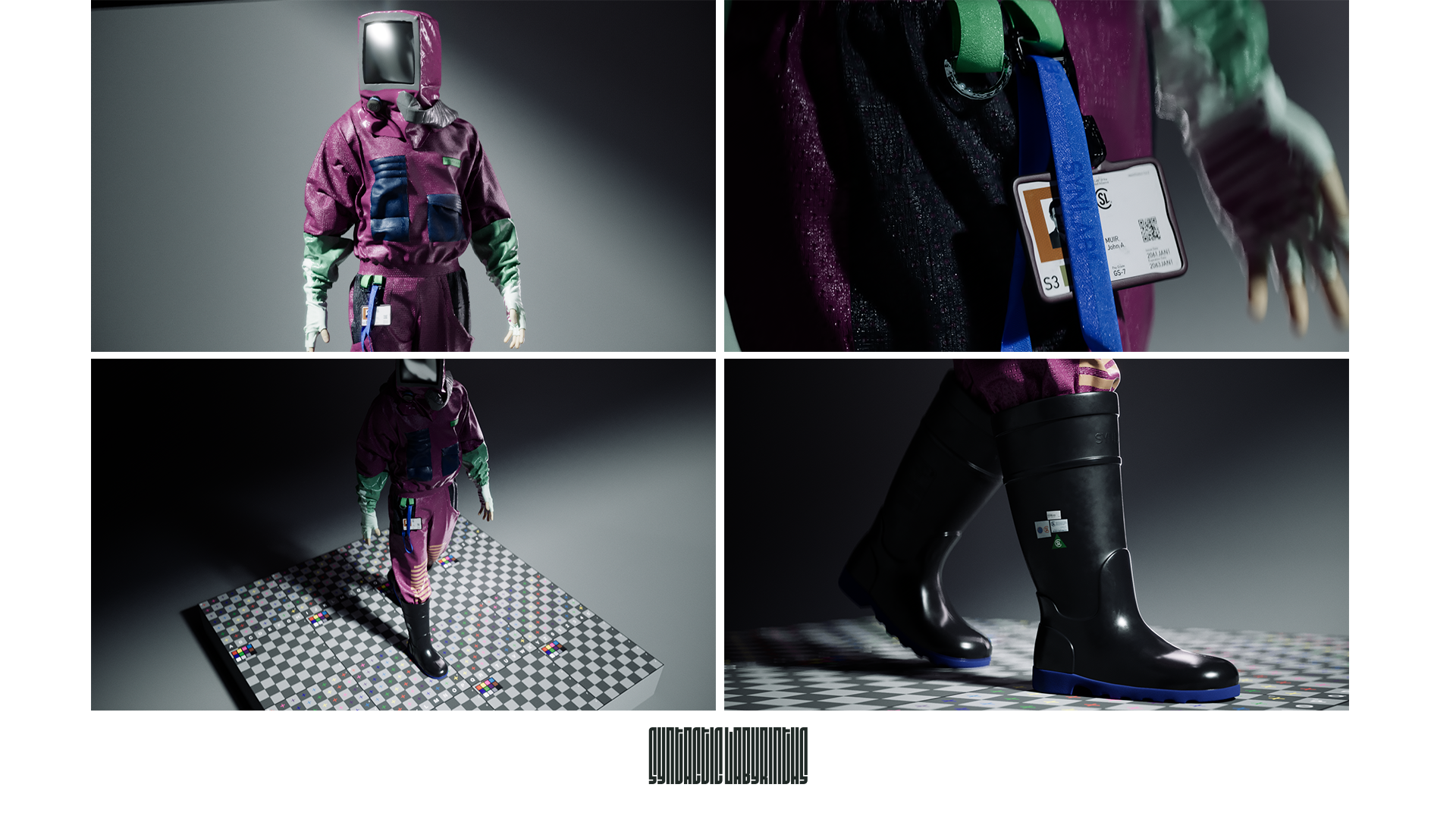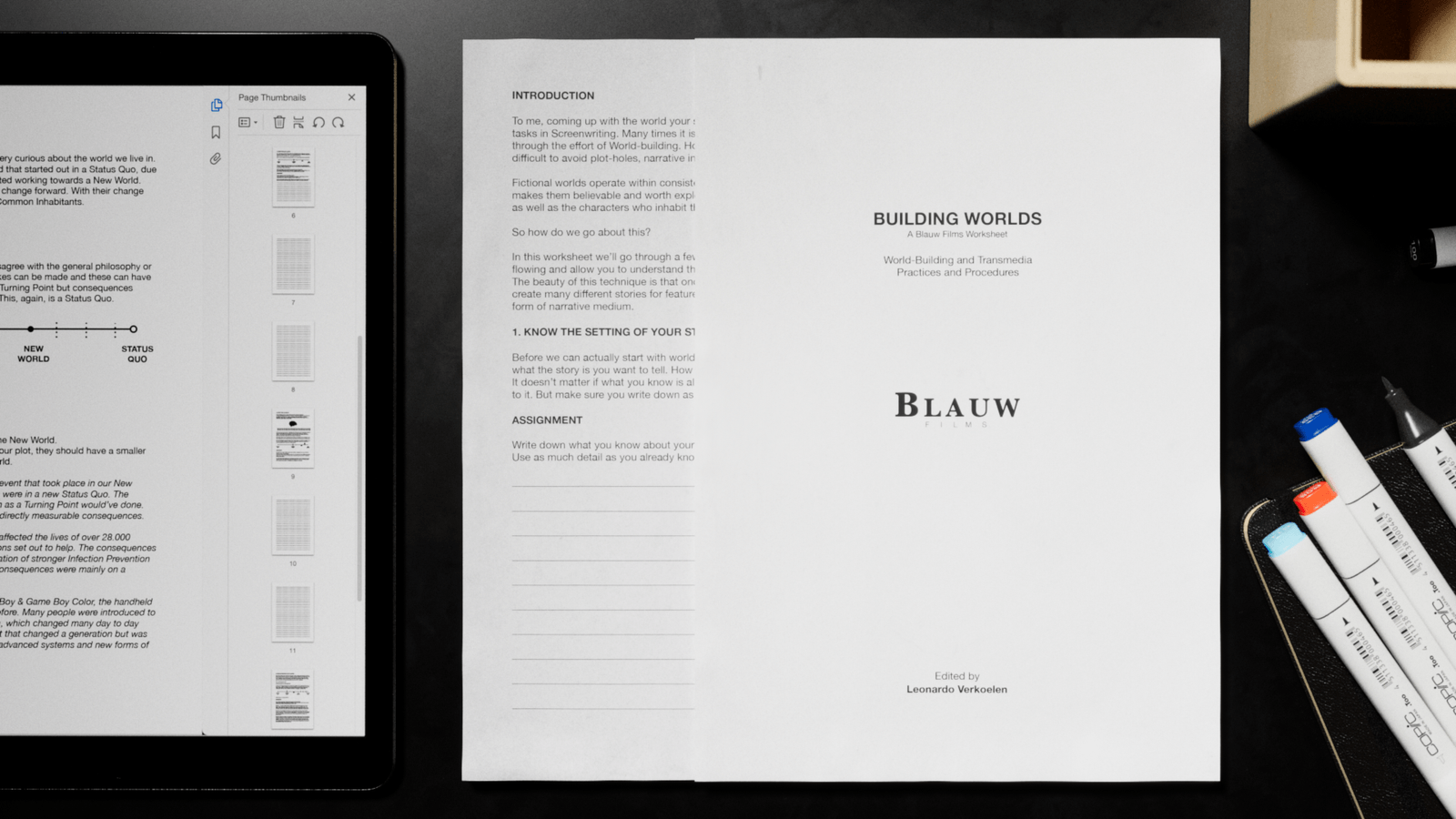The Digital Costume Design Process
The Creative Design process for 3D Costumes
Syntactic Labyrinths
Costume Design as a practice originates from theatre, and was later integrated into film productions. Whereas costume design in animation is traditionally part of the character development process, costume design principles are becoming increasingly relevant as the animation format evolves. Especially when we look at the production of 3D characters, costume design is slowly becoming an integral part of the creative design and execution process.
Costume design in 3D animation is a multifaceted discipline that combines artistic creativity with technical proficiency to enhance character development and storytelling. Costumes contribute significantly to a character's identity, background, and the narrative's authenticity.
Costume Designers for 3D animated projects do not only need technical skills in the creation of garments, but also knowledge about 3D workflows.
In this blog I’ll take you through my own process of designing 3D characters, and showcase where costume design and technical execution skills meet to create authentic character designs for your stories.

3D Costume Design Resources
First of all, I’d like to point you to a few resources, for further information on the topics of costume design as a creative process and 3D costume design for animated projects.
Blauw Films Resources
This blog explains the entire design process for digital costumes, from reference and research resources to which software to use.
This blog attempts to dissect the entire costume design and production process (and includes a flowchart to illustrate it all!). It covers every single aspect of the costume production process for film, from design and creative collaborations to legal and management.

Academic Research
In her thesis “Digital character costume design in computer-animated feature films”, Maarit Kalmakurki argues the importance of costume design and the costumer designer’s distinct skill set for the production of 3D animated films. She proves that costume design is an influential component during the pre-production and production stage. The costume designer collaborates with directors, animators, character artists and texture artists to make informed decisions and create characters who’s garments aid their performance and visualise the film’s story.
Furthermore, Maarit Kalmakurki has written a variety of papers on topics related to costume design and digital costume design. I highly encourage anyone interested in these topics to visit her website and read her works.
3D Costume Design Process
To illustrate the 3D costume design process, I’ll use my Hazmat Suit designs for Syntactic Labyrinths as a leading example.
The Script and Story
Both physical and digital costume design usually start with a script. The script informs the story that the costumes need to tell.
Leo wrote the first draft of the Syntactic Labyrinths script around 2018. The first draft did not feature any scenes with humans. After I drew the entire storyboard, we had to conclude that the journey of Syntactic Labyrinths needed a human starting point. An emotional point of reference. Therefore, this is also the function of the human characters as a story device. Although they are nameless and faceless characters, they are human nonetheless. They have their own thoughts, tastes, dreams and skills. This is what the hazmat suits should reflect.

I explain the process of reflecting on the script in this blog: The Costumes of Syntactic Labyrinths. Here I talk about world building and Leo’s design references for the film.
If you’re questioning why the hazmat suit helmets have this distinct square shape, this blog will answer exactly those types of questions.
Research and Concept Sketches
I took Leo’s references and worldbuilding to begin my own research. When dealing with science-fiction costumes, there are a couple of specifics to consider. Worldbuilding is designing in theory and a great tool to kickstart the creative design process. I used the world building techniques to find out what type of costumes the people in Syntactic Labyrinths will need. You can find these exact world building methods in this blog: “How to Design Costumes for Scifi Stories”
World building allows me to think about the costumes from the context of their own universe. I can ask myself what type of fibers are available?, and how are the hazmat suits produced? I can use the answers to these questions to lead my decision making process.


As the Syntactic Labyrinths Hazmat Suits have gone through multiple design explorations, you can clearly see the influence of research and sketches in the design process. The more world building and technical information you gather, the clearer yourdesign decisions should become.

Personally, I do like to draw and sketch ideas, before diving into any software. It allows me to plan and iterate quickly and instinctively. However, drawings are nothing but a starting point. The design process is fluid, and the final form often takes shape as you work.
For the hazmat suit as well, the final sketch down below still features the oxygen tube and oxygen "backpack". It was only during the 3D construction process, that we scrapped this element. We decided that it wasn't needed narratively, and also got in the way when animating the garment.

3D modeling
All of the modeling was done in either Marvelous Designer and Style 3D.
Both software are great to create production-ready assets, and seamlessly integrate with other software such as Blender, Zbrush and Substance 3D Painter.
I say seamless, but it took me a while to understand the entire workflow. Even then, it can be a rather time-consuming process, especially for a single person. Even with the current hazmat designs, we skipped the retopology and zbrush steps to save time. Visualising the concept is more important to us, at the moment.

During the 3D modeling process I took into consideration my references, and especially the materiality of the cloth. I thought about the weight and thickness of the cloth, as well as what the intended silhouette actually looked like on a three-dimensional body.
Minor aesthetic alterations were made, but we also made decisions based on the knowledge that this suit would have to be animated in the future. For example, early hazmat designs feature a much looser-fitting suit, whereas later on we opted for a design that was a bit more streamlined.

The main resource I can recommend to understand the Marvelous Designer / CLO3D / Style3D to Substance Painter using Blender, are these tutorials from Digital Fashion Blender.
Texturing
I used Photoshop to plan color, material and pattern placements. I also created all patterns in Photoshop, which we could use as alpha maps inside 3D texturing software.


The actual texturing was done in Substance 3D Painter. There are two key things to take into consideration during this process:
- Use high-quality textures
Fidelity is everything. Especially for fabric materials, which have an incredibly high level of detail.
For the Syntactic Labyrinths costumes, we got our textures from Bakermat. They collaborate with fabric mills, designers and Vizoo tech to create incredible PBR textures of high-quality textiles.
You can hop over to their Virtual Library and try a selection of their PBR materials for free.

- Research and refer to real materials
All materials in real life have distinct features and pyscial properties. You have to research these properties, and replicate them in 3D. Pay extra attention to a material's roughness, dirt patterns, micro details and surface imperfections.
As of now, we don't have any texturing tutorials on Blauw Films. However, Arvid Schneider's tutorials are one of the best out there.


Rendering
Everything comes together in the final render. It's the same as finally seeing the actor, in costume, on set under the right lighting. We create lookdev renders as if we’re doing screen tests. We look at the costume fit and textures and judge their quality.

We do all of our rendering in Cinema 4D with Chaos Corona. Corona’s physical render engine allows us to set up cinematic shots in a realistic way. We try to give all of our projects a distinct look, and Syntactic Labyrinths is no different. Harsh sunlight, dark colours, industrialism, underground architecture and brutalist design. That's what "Synlab" looks like.
We created this image of Ayla wearing the hazmat suit, and made her look into the sun. The image visualises the apocalyptic story of Syntactic Labyrinths.

Syntactic Labyrinths
Visit the Syntactic Labyrinths Production Page to find everything related to the film, its production and behind the scenes development.
On the Production page you can find short stories, download free wallpapers and see the art we’ve created up until now.
Behind the Scenes
We also upload behind the scenes videos on our Youtube channel. From CGI planet Earth tutorials to World Building deep dives.
Merchandise
If you want to support the independent development of Syntactic Labyrinths, you can do that by jumping over to our Shop to get some merchandise for yourself or a friend who loves epic space art!
In line with the visual themes of space in Syntactic Labyrinths, we have created Planetary Art Prints of our Solar System's planets. You can find out the story behind every print right here.

References
- Style 3D — Style3d.com
- Marvelous Designer — marvelousdesigner.com
- CLO3D — clo3d.com
- Substance 3D Painter — Adobe
- Bakermat — bakermat.net
- Blender — blender.org
- Zbrush — Maxon
- Photoshop — Adobe
- Cinema 4D — Maxon
- Chaos 3D rendering software — chaos.com
























































































.jpg)





.jpg)

.jpg)






.png)




0 Comments